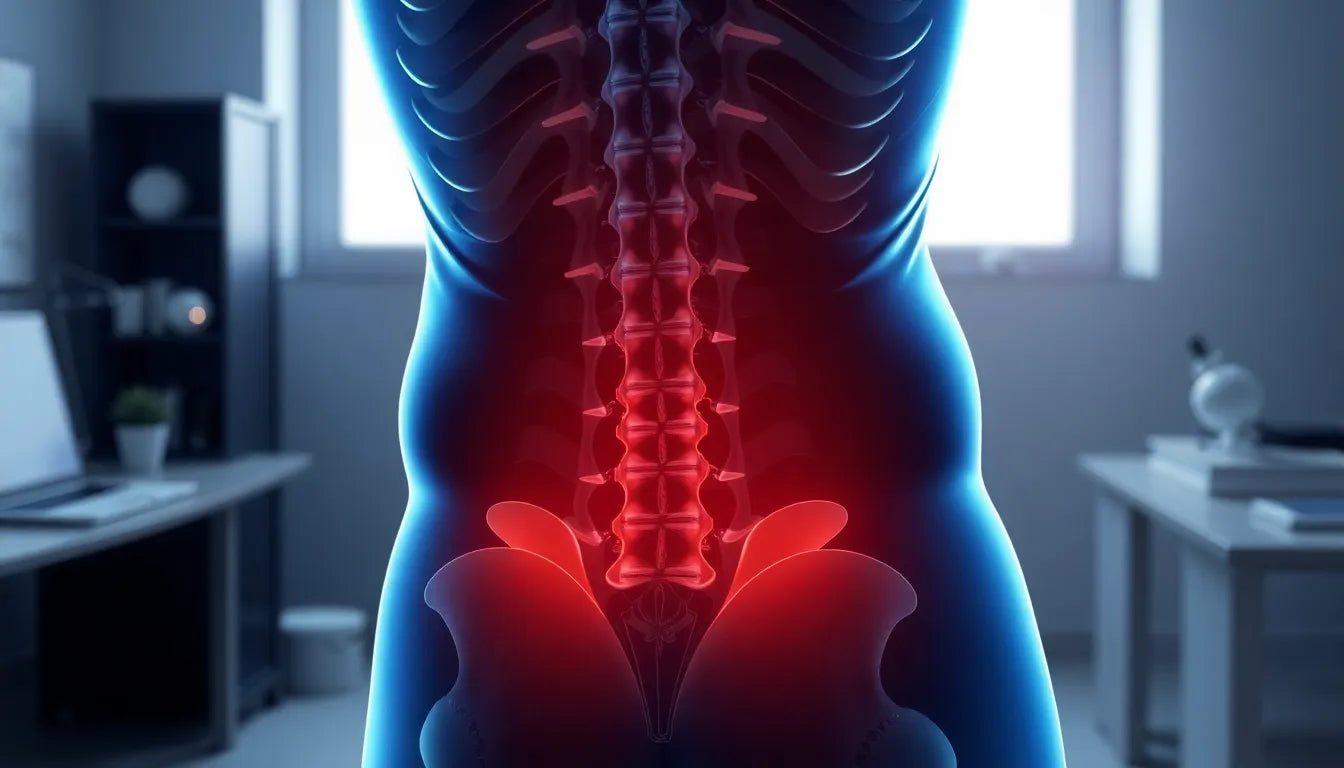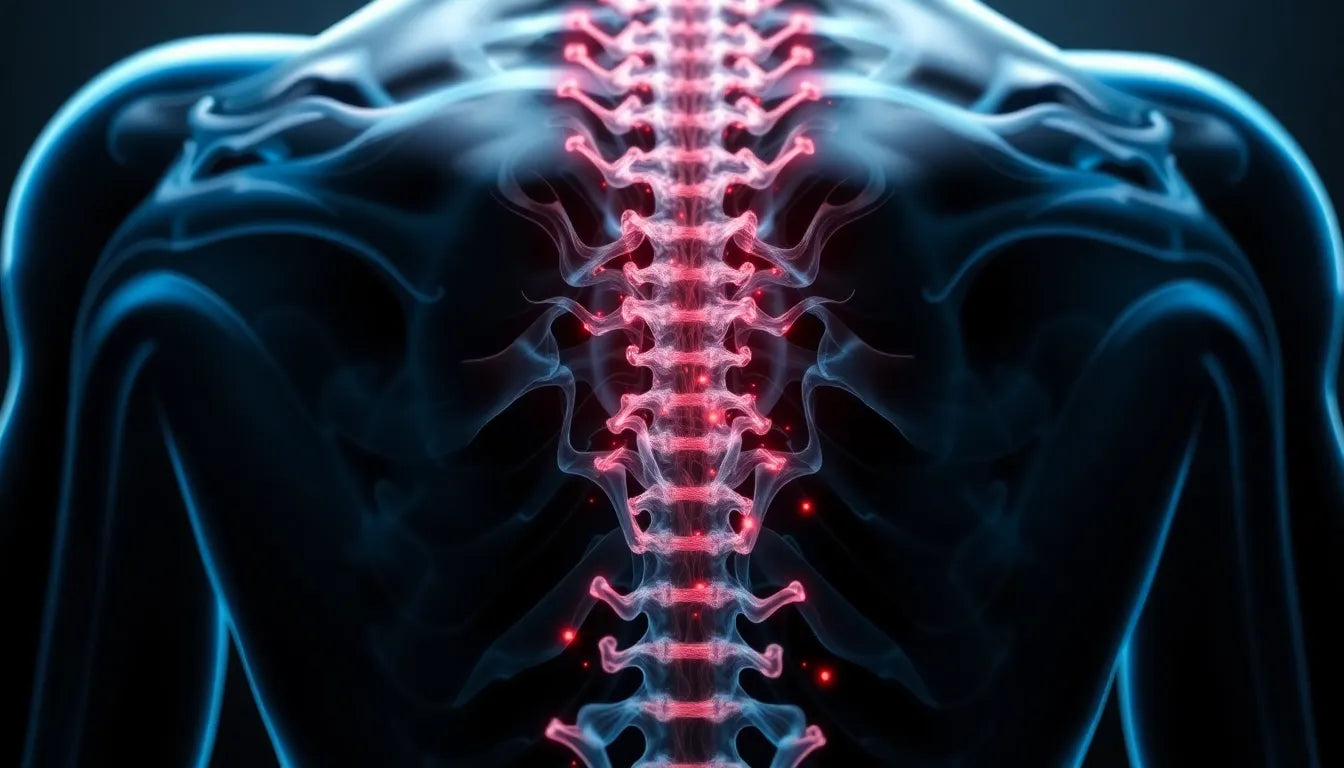Understanding how to fix a herniated disc begins with recognizing what it is and how it affects your body. A herniated disc occurs when the soft cushion of tissue between the bones in your spine pushes out. This can lead to discomfort and pain, often affecting your ability to perform daily tasks with ease. Common causes include age-related wear and tear, sudden strain, or improper lifting techniques, which can put undue pressure on the spinal discs.
Addressing herniated disc pain is crucial for improving your quality of life. The discomfort can range from mild to severe, impacting not just physical health but also emotional well-being. The good news is that there are various treatment options available, from conservative approaches like physical therapy and rest to more advanced interventions such as surgery or innovative therapies. Understanding these options allows you to make informed decisions about your health and recovery path.
The impact of herniated disc pain
Living with a herniated disc can take a significant toll on both the body and mind. Physically, the pain can limit mobility, making it challenging to engage in activities you once enjoyed. Simple tasks like bending over to tie your shoes or lifting a grocery bag can become daunting. This physical limitation often leads to frustration and can affect mental health, causing stress or anxiety about your condition.
Finding effective relief from herniated disc pain is essential. Not only does it restore physical function, but it also helps in regaining emotional balance. The journey to relief often involves a combination of treatments tailored to your specific needs, emphasizing the importance of a comprehensive approach. Whether it's through conservative management or exploring advanced medical options, the goal is to alleviate pain and improve overall well-being.
Hook: a relatable scenario
Imagine waking up each morning, dreading the thought of getting out of bed because of the sharp pain in your back. Daily activities that once seemed effortless now feel like insurmountable challenges. If this scenario sounds familiar, you're not alone. Many individuals struggle with the debilitating effects of a herniated disc, searching for answers and relief. Understanding how to fix a herniated disc and exploring the right treatment options can be the first step toward reclaiming your life.
Conservative and non-surgical treatments for herniated discs
When facing the challenge of how to fix a herniated disc, many individuals start with conservative and non-surgical treatments. These methods are often the first line of defense, aiming to relieve pain and restore function without the need for invasive procedures.
Rest and activity modification
One of the simplest yet most effective approaches involves rest and activity modification. By adjusting your daily activities, you can significantly reduce the pressure on your spine, allowing the affected area to heal. It's important to strike a balance between rest and gentle activity. Prolonged inactivity can lead to muscle weakness, so incorporating light exercises can help maintain muscle strength and flexibility.
Physical therapy and structured exercise
Physical therapy plays a crucial role in the conservative management of herniated discs. Therapists often design structured exercise programs tailored to individual needs, focusing on strengthening the muscles that support the spine and improving flexibility. Techniques such as stretching, core stabilization exercises, and posture training are commonly used to alleviate pain and prevent further injury. The goal is to enhance mobility and reduce discomfort, enabling you to return to your daily activities with greater ease.
Pain management strategies
Managing pain is a critical component of treating a herniated disc. Nonprescription medications like nonsteroidal anti-inflammatory drugs (NSAIDs) can help reduce inflammation and provide relief from pain. For those with more severe symptoms, epidural steroid injections may be considered. These injections deliver anti-inflammatory medication directly to the affected area, offering significant pain relief for some patients. It's essential to work closely with healthcare providers to determine the most appropriate pain management strategy for your condition.
Minimally invasive and surgical interventions
While conservative treatments are effective for many, some individuals may require more advanced interventions. Minimally invasive and surgical options can provide relief when other methods fail to alleviate symptoms.
Traditional discectomy and microdiscectomy
Traditional discectomy and microdiscectomy are surgical procedures aimed at removing the portion of the herniated disc that is pressing on a nerve. The difference lies in the size of the incision, with microdiscectomy involving a smaller cut and typically resulting in a quicker recovery. These procedures can offer significant pain relief and improved function, making them viable options for those with persistent symptoms.
Endoscopic discectomy
Endoscopic discectomy is a newer, ultra-minimally invasive technique that has gained popularity due to its advantages, such as smaller incisions, reduced post-operative pain, and faster recovery times. This procedure uses a tiny camera and specialized instruments to remove the herniated disc material, minimizing tissue disruption. It's an appealing option for patients seeking less invasive surgical solutions.
Total disc replacement
Total disc replacement is considered when conservative treatments and other surgical options are not suitable. This procedure involves replacing the damaged disc with an artificial one, aiming to maintain motion in the spine and provide long-term relief. It's typically reserved for select patients, particularly those with chronic symptoms and specific anatomical considerations.
Emerging and advanced non-surgical options
In recent years, emerging therapies have offered new hope for individuals seeking non-surgical solutions to herniated disc pain.
Cold laser therapy
Cold laser therapy is a non-invasive treatment that uses low-level lasers to reduce inflammation and promote healing in the affected area. This therapy is ideal for individuals looking for alternatives to medication or surgery, offering a safe and effective way to manage pain and support recovery.
Stem cell therapy
Stem cell therapy involves using autologous stem cells to regenerate disc tissue and decrease inflammation. Although still considered an emerging treatment, it shows promise in providing relief and promoting healing. Research continues to explore its potential applications and benefits for herniated disc patients.
Platelet-rich plasma (PRP) injections
PRP injections utilize the patient's own blood components to stimulate tissue repair and reduce inflammation. This therapy is particularly beneficial for mild to moderate cases, offering a safe profile and faster recovery expectations. PRP is gaining attention as a viable option for those seeking innovative, non-surgical treatments.
In conclusion, understanding the array of treatments available for herniated discs is crucial in making informed decisions about your health. Whether opting for conservative management or exploring advanced therapies, the goal remains the same: to alleviate pain and enhance quality of life.
Balancing traditional and innovative treatments for herniated disc pain
When considering how to fix a herniated disc, it's essential to recognize the value of a personalized treatment plan. Each individual's condition and lifestyle necessitate a unique approach, blending traditional and innovative treatments. Conservative methods, such as rest, physical therapy, and medication, often serve as the foundation. These strategies aim to alleviate pain and restore mobility without invasive procedures.
However, for those who do not find relief through conservative means, exploring advanced options becomes crucial. Minimally invasive surgeries like microdiscectomy and endoscopic discectomy offer significant benefits with reduced recovery times. Meanwhile, emerging therapies such as cold laser therapy, stem cell therapy, and PRP injections provide non-surgical alternatives that promote healing and reduce inflammation. Consulting with healthcare professionals to tailor a plan that combines these approaches can lead to optimal outcomes, ensuring both immediate relief and long-term health.
Conclusion
In conclusion, understanding the diverse treatment options for herniated disc pain is vital for making informed decisions about your health. Whether you choose conservative management or explore advanced interventions, the primary goal remains consistent: to alleviate pain and enhance your quality of life. Consulting with healthcare professionals will guide you in selecting the most suitable path, ensuring a comprehensive approach to recovery.
Frequently Asked Questions
What are the first steps if I suspect I have a herniated disc?
If you suspect a herniated disc, the first step is to seek a medical evaluation. A healthcare professional can confirm the diagnosis and recommend starting with conservative treatments, such as rest, physical therapy, and over-the-counter pain medications.
How long does recovery from a herniated disc typically take?
The recovery time from a herniated disc varies depending on the severity and chosen treatment method. While some individuals may experience relief within weeks, others may require several months, especially if surgical interventions are involved.
Are there lifestyle changes that can help prevent future herniated discs?
Yes, incorporating regular exercise, maintaining a healthy weight, and practicing good posture can significantly reduce the risk of future herniated discs. These lifestyle changes help strengthen the muscles supporting the spine and minimize strain on the discs.
Is surgery always necessary for a herniated disc?
No, surgery is not always necessary for a herniated disc. It is typically reserved for severe or persistent cases where conservative treatments have failed to provide relief. Most individuals find improvement with non-surgical methods.
Can herniated discs heal on their own?
In some cases, herniated discs can improve over time with conservative management. Pain and inflammation may decrease, allowing the disc to heal without the need for surgical intervention.
Sources
- University Hospitals. "Endoscopic, Ultra-Minimally Invasive Spine Surgery."
- Yale Medicine. "Surgical Interventions for Herniated Discs."
- Elevation Health Center. "Cold Laser Therapy for Herniated Discs."
- Amazing Spine Care. "Stem Cell and PRP Therapy for Disc Healing."
- Dr. Mostafazadeh Pain Clinic. "Advanced Non-Surgical Therapies."
- Cuéllar Spine. "Comprehensive Treatment Options for Herniated Discs."
- Mayo Clinic. "Conservative Management of Herniated Discs."


















